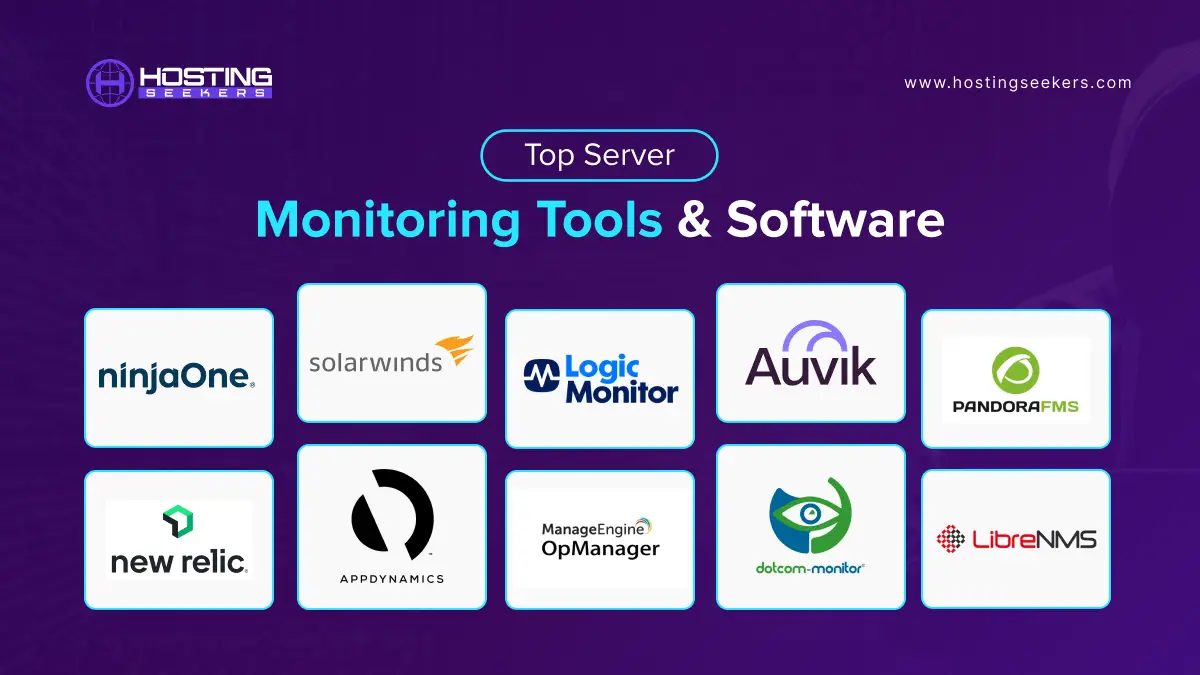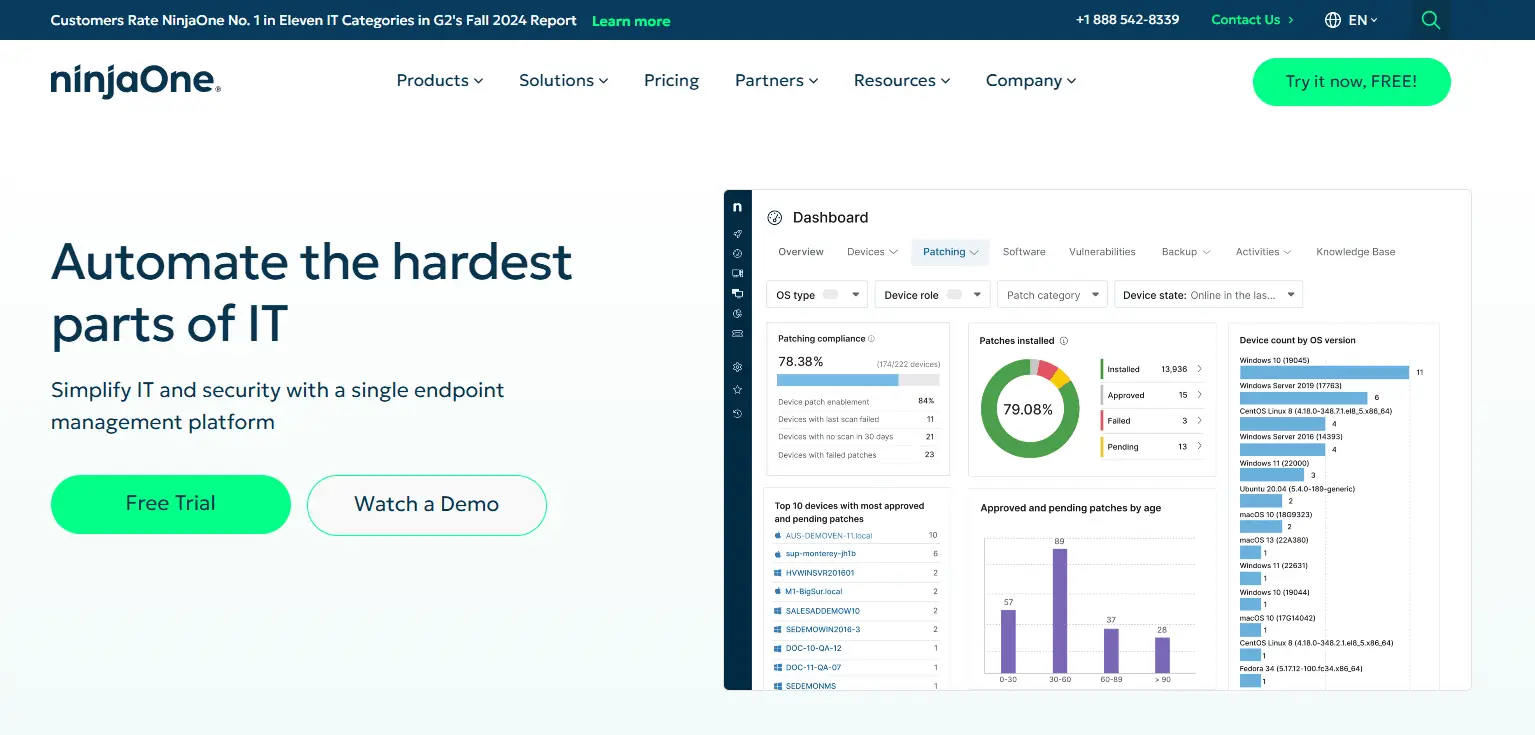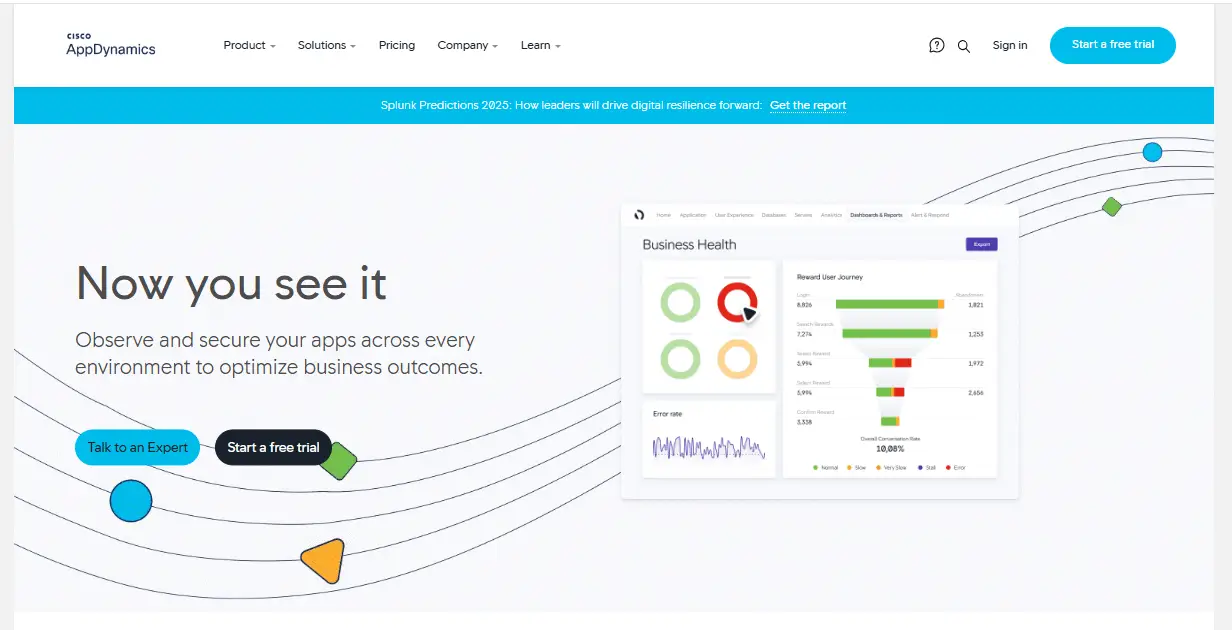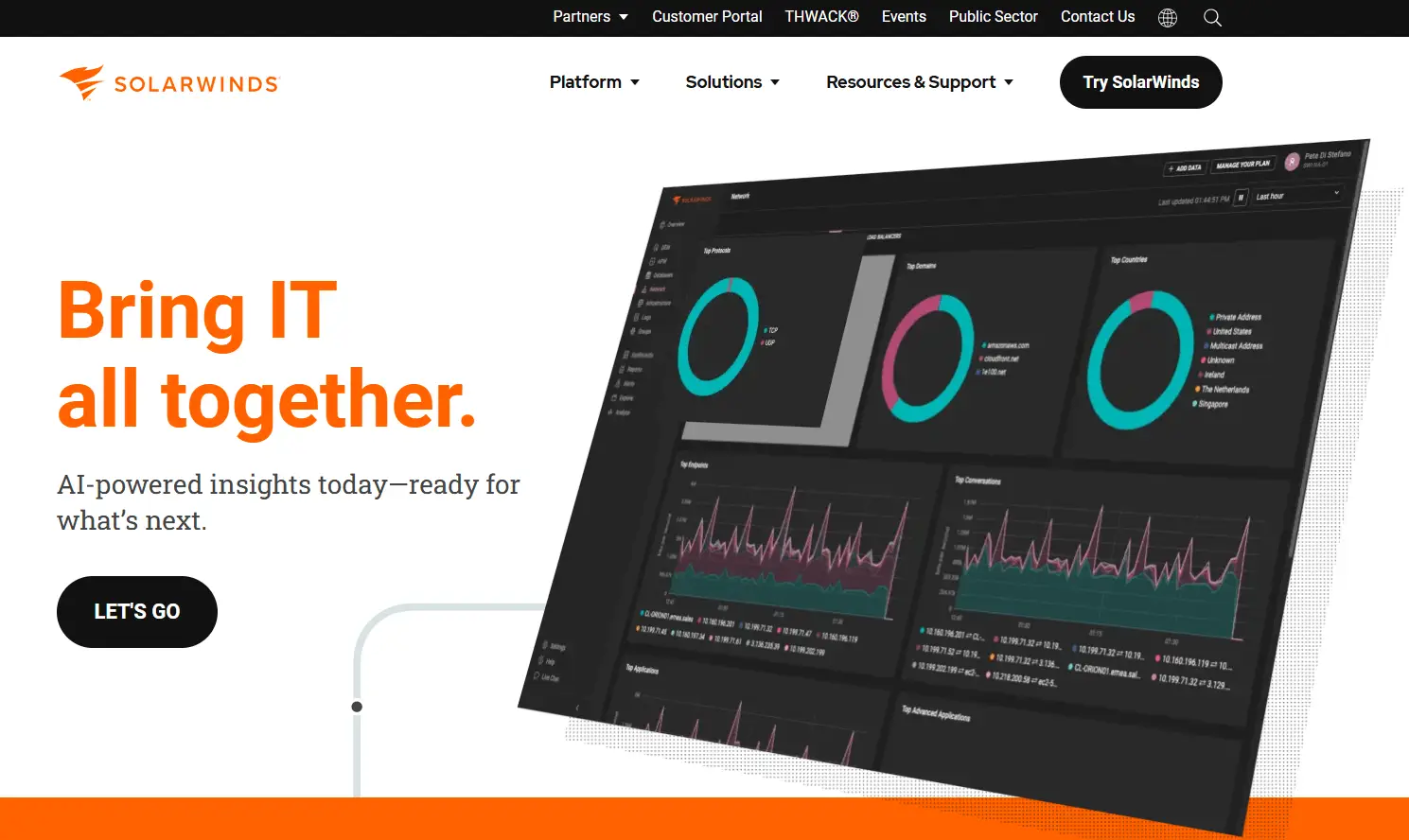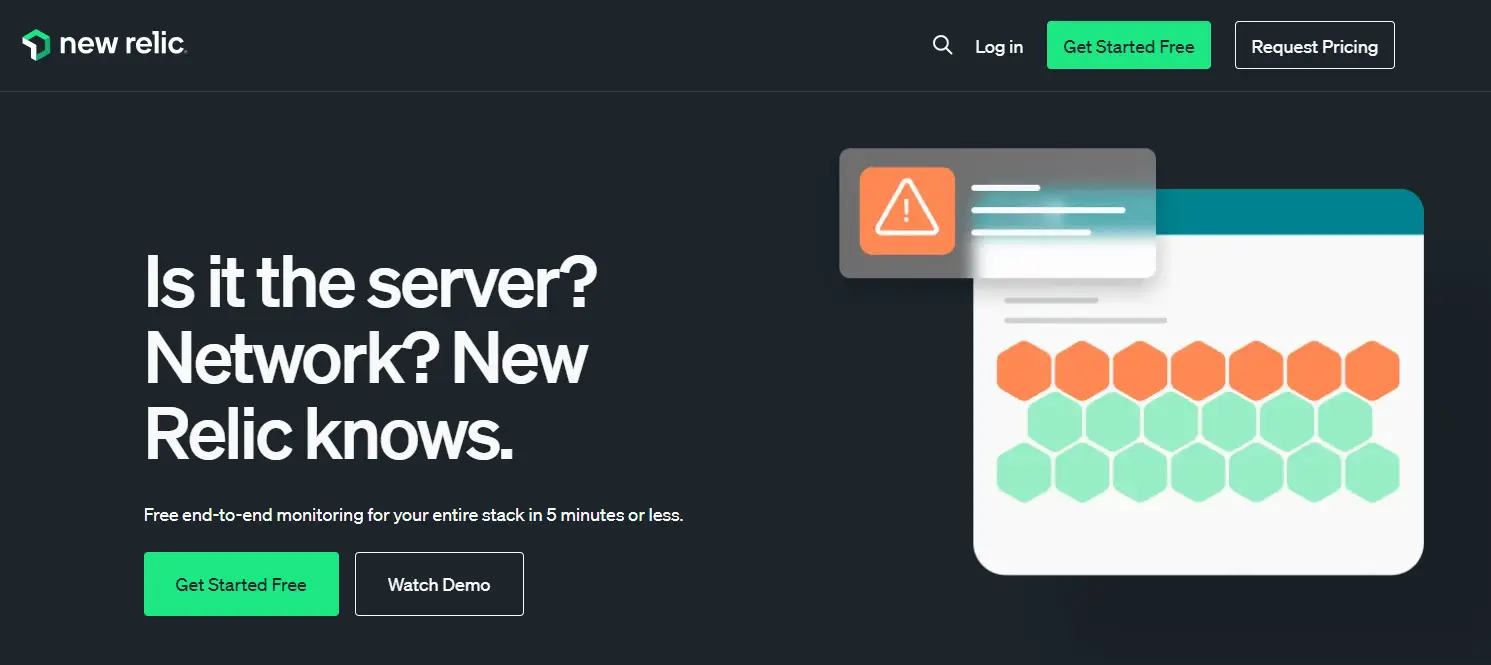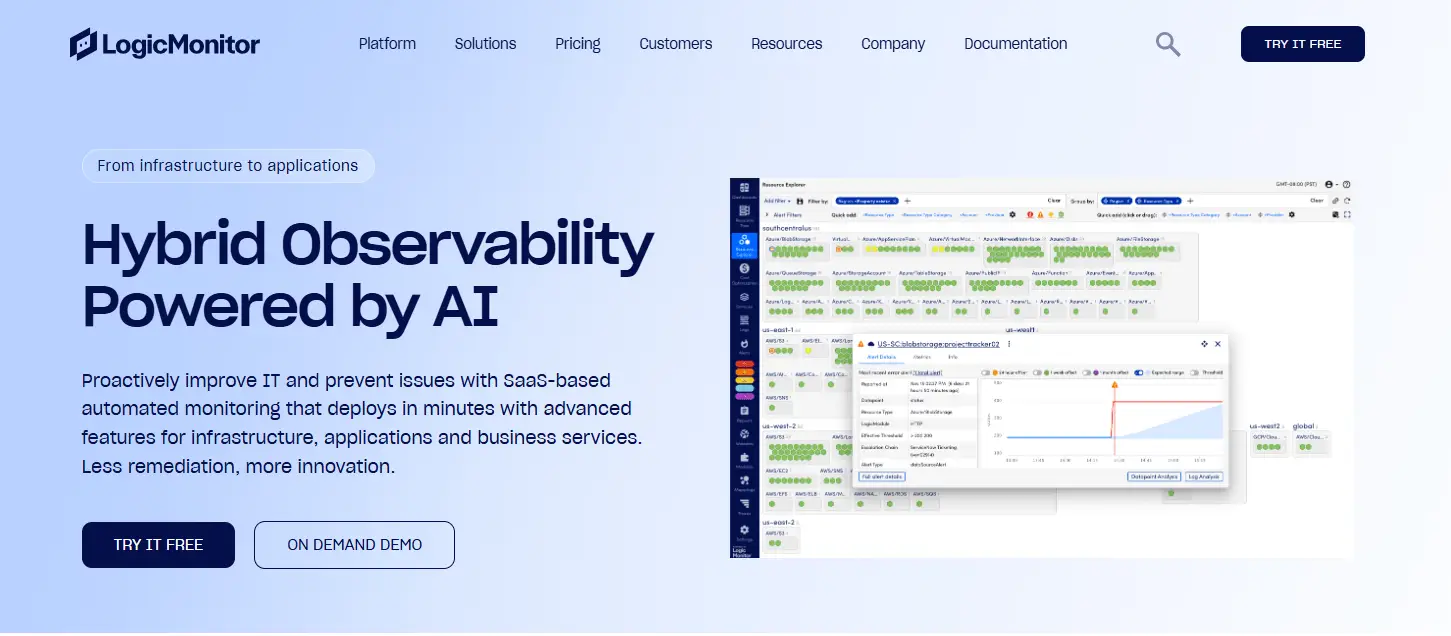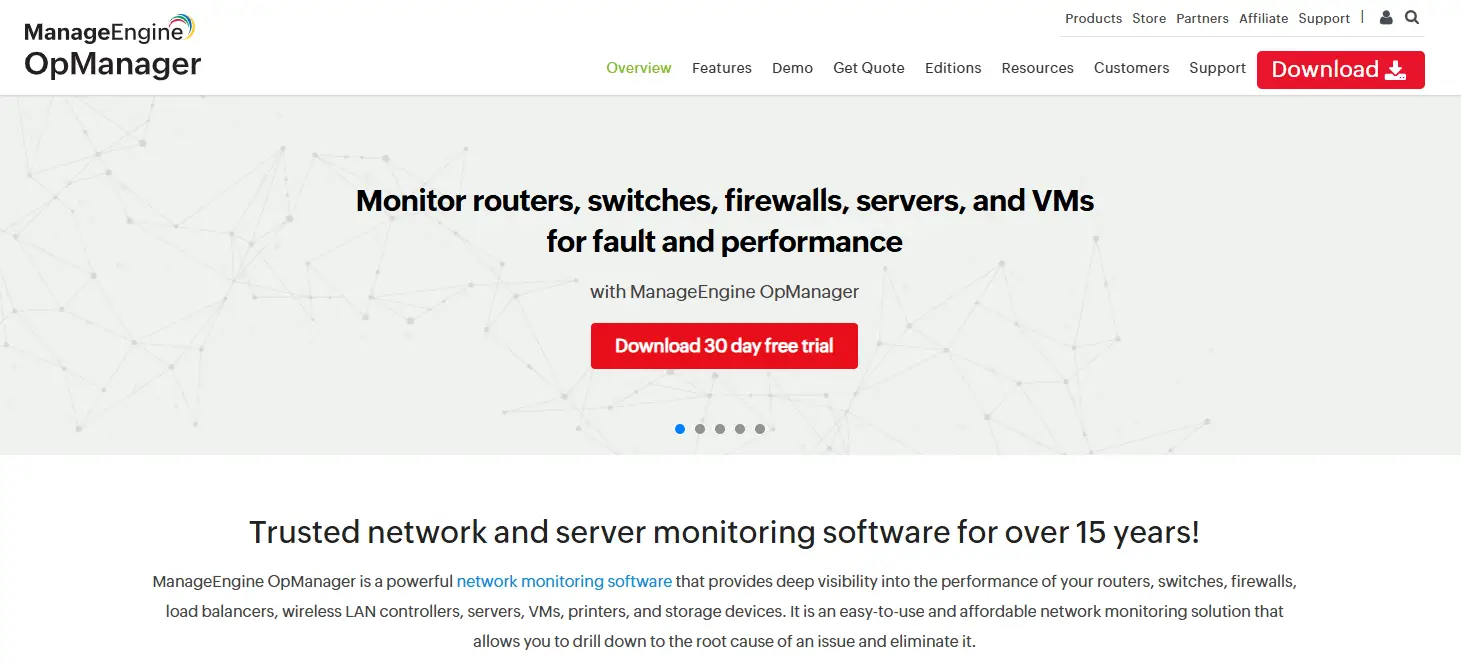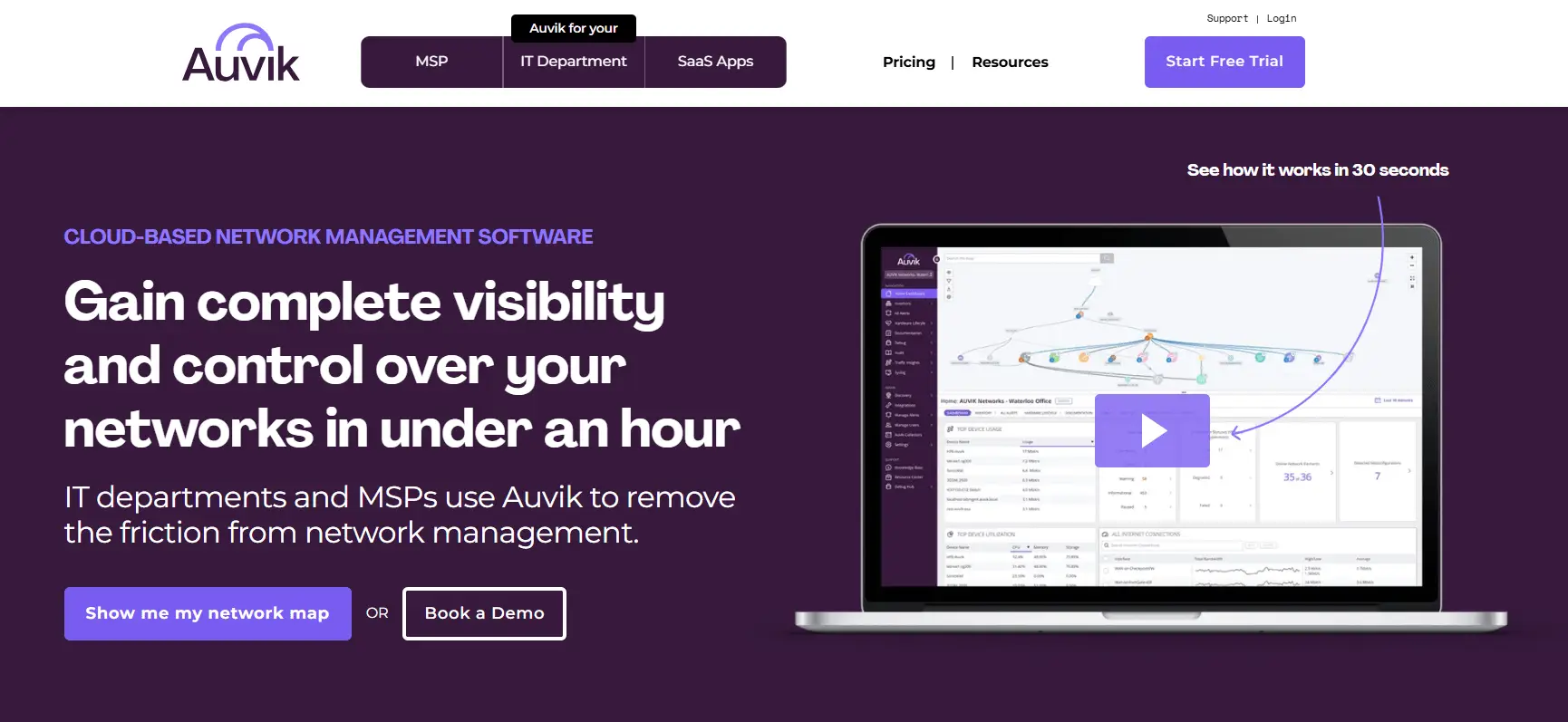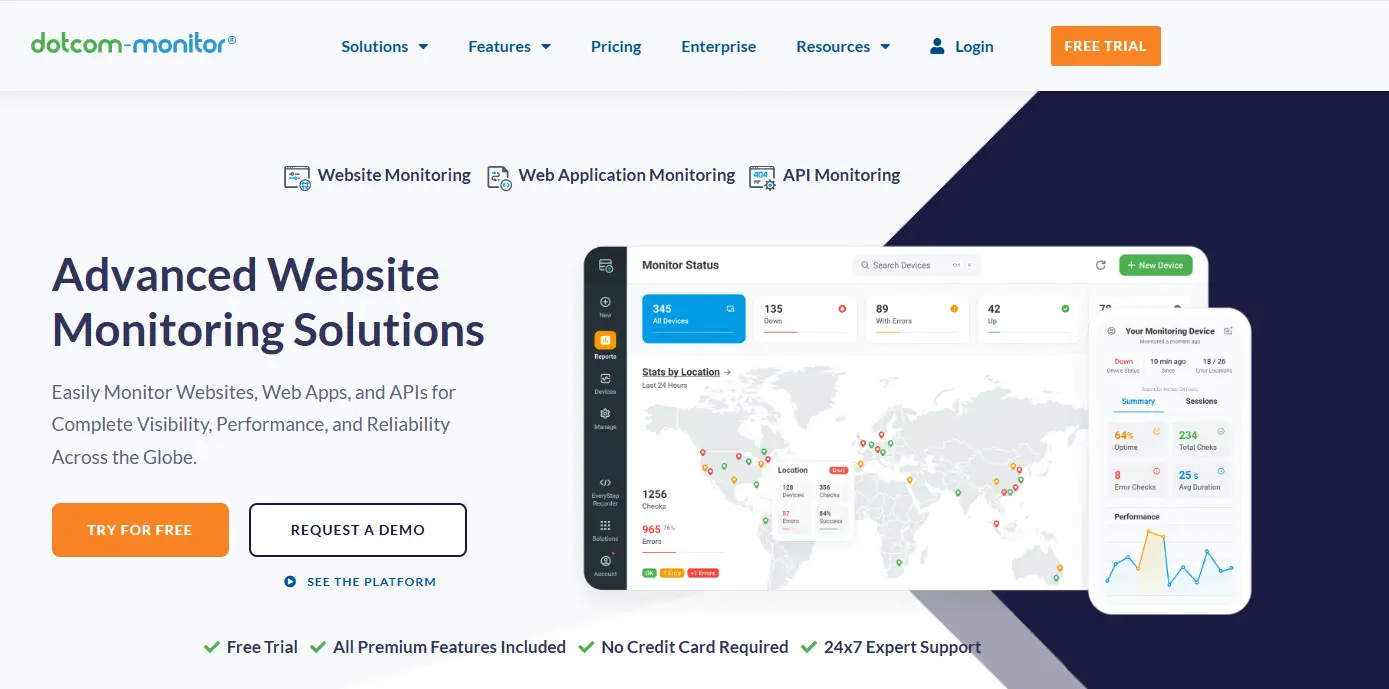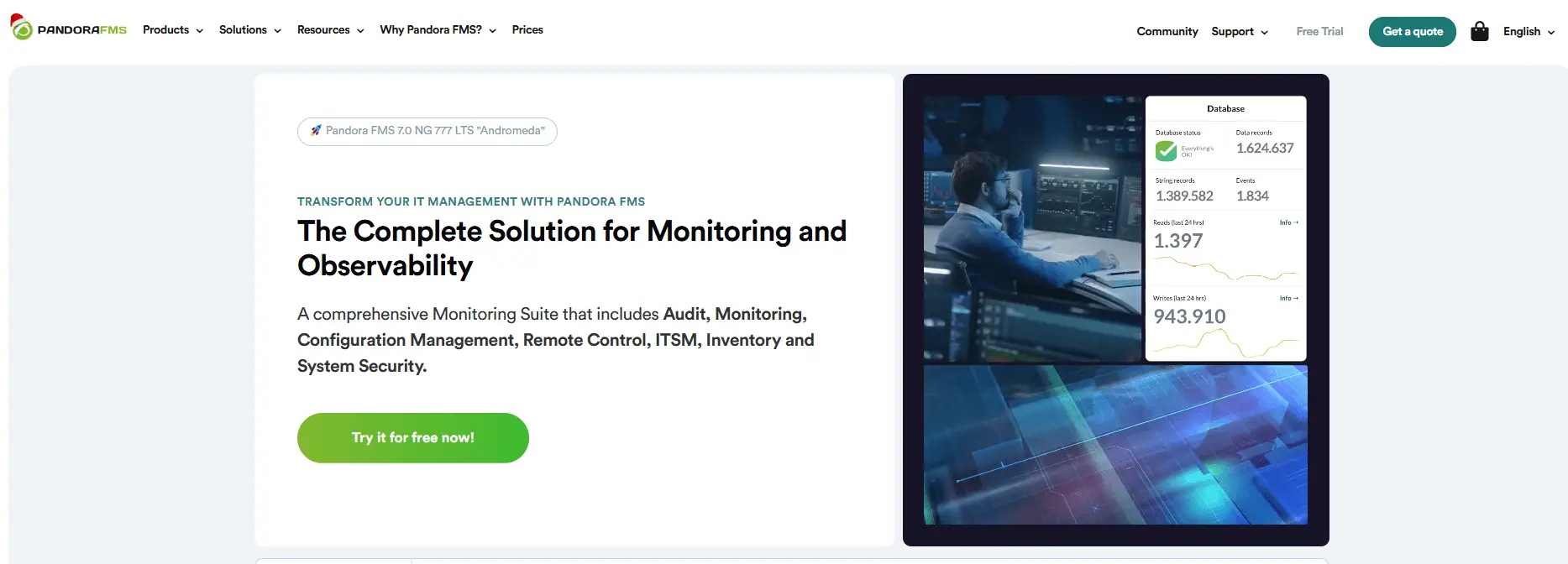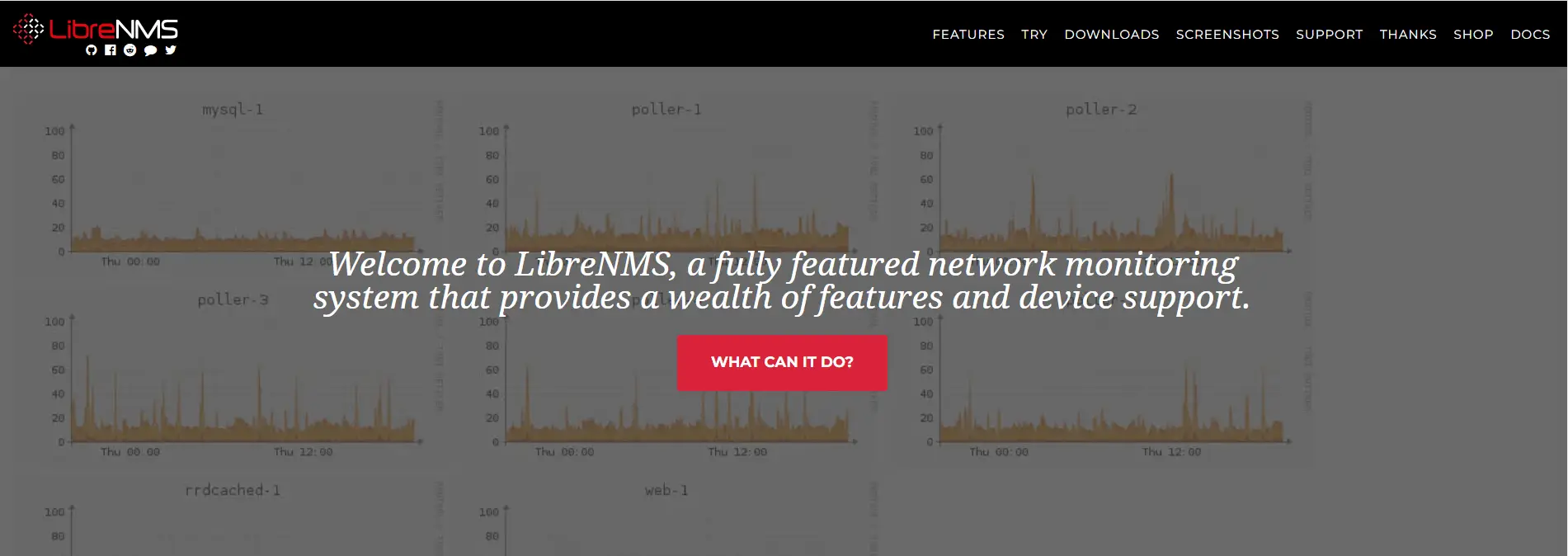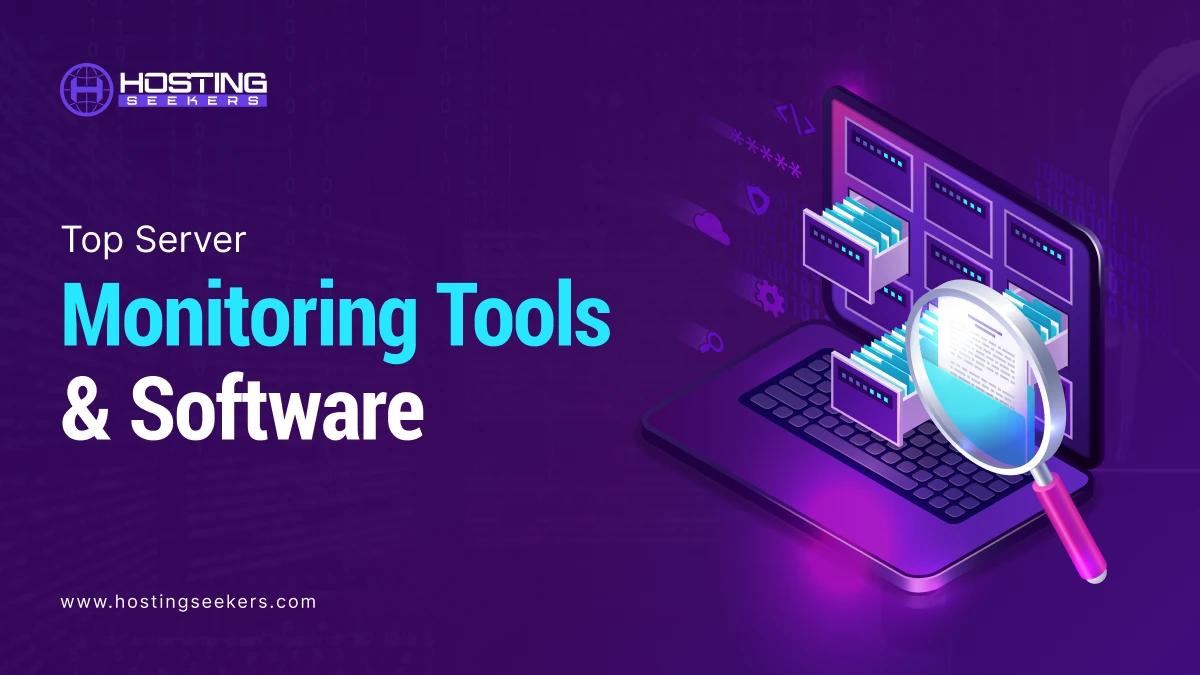
Top Server Monitoring Tools & Software in 2025
Web Server Published on Date: December 20th 2024With the rising complexities of IT infrastructure, businesses require reliable tools to ensure optimal server performance, minimize downtime and maintain seamless operations. Also, server monitoring tools in 2025 have evolved to incorporate advanced technologies like real-time monitoring and predictive maintenance, offering businesses with deeper insights and improved efficiency.
In this article, we will explore the top server monitoring tools and software for 2025, highlighting their key features, advantages, and how they can help businesses stay proactive in managing their IT environments.
What is Server Monitoring?
Server Monitoring can be stated as the practice of monitoring and observing the availability, performance, and health of servers within a computer network.
This commonly includes collecting data on various metrics like network traffic, CPU usage, memory usage, disk space, and application performance. Moreover, Server monitoring tools are used to automate this process, allowing administrators to easily highlight the errors, trouble shoot problems and more.
Why Do You Need Server Monitoring Tools?
Servers are vital components of a network. They come with authorization, authentication, security, network functionality, and offer platform apps to run. Moreover, the health and security of these network components are vital for business productivity.
So, depending on the function of the server, a compromised server may allow an attacker to withdraw sensitive data containing information about employees and clients. Now let’s look at the top server monitoring tools that you could consider in 2025.
Top Server Monitoring Tools & Software in 2025
1. NinjaOne
NinjaOne is recommended as the top server monitoring tools that excel in remote server monitoring. It supports both macOS and Windows which enables users to easily track server health, uptime and performance metrics.
The tool’s all-in-one nature makes it more ideal for both small teams and large enterprises and provides cloud-based monitoring with real-time alerts. Moreover, NinjaOne also provides an all-features –offered free trail on their website.
2. AppDynamics
AppDynamics is another server monitoring software that provides performance monitoring solutions. It provides you with the ability to monitor the health of the server and check in on network infrastructure.
Moreover, identify server issues and solve them quickly with AppDynamics. Don’t allow slow load times and bottle necks impact your end users. You can check out their website for more details.
3. SolarWinds
SolarWinds offer web performance with a robust focus on server and network performance. It’s an open source and free server monitoring tool. Moreover, it also helps in monitoring response time, memory, CPU load and event logs.
Moreover, SolarWinds is a free server monitoring tool. So, you can start with a free trail on SolarWinds.
4. New Relic
New Relic is another server performance monitoring tool that understands that user experience is the most important metric of success. Moreover, New Relic offers deep observability into server performance, application health, and user experience metrics.
It creates and develops easy to understand visualization to help your team make sense of performance data. It also offers numerous integrations for whatever you need.
5. Logic Monitor
Logic Monitor is cloud-based server monitoring tool developed and designed for more scalability. It helps to track key performance metrics like memory usage, CPU load, and uptime for server across hybrid infrastructures.
Therefore, it incorporates unified dashboard, users can view performance data for up to 25,000 devices, making it ideal for large businesses.
6. ManageEngine OP Manager
Manage Engine OP Manager offers comprehensive server monitoring for both physical and virtual servers. The tool offers memory, CPU usage, disk space and event logs, providing proactive monitoring to avoid downtime.
It monitors the virtual and physical availability and health of your IT environment. It monitors URLs, server, and even logs, and more.
7. Auvik
Auvik provides a network monitoring solution that comes with server monitoring capabilities. Therefore, with Auvik, you can view the services tht are operating against network elements, workstations, and servers on your network.
In addition, it offers a standard server monitoring tool with which you can track security infrastructure, identify unusual traffic, enhance compliance and take control of the IT infrastructure.
8. Dotcom-Monitor
Dotcom– monitor provides a significant server monitoring software solution for websites, applications, and servers. It offers real time insights that help you to proactively address issues before they affect user experience.
It has global monitoring locations that monitors server uptime, response times, CPU load, disk memory and usage. Moreover, Dotcom monitor comes with tailored dashboard that offers detailed altering systems notify your IT teams of any performance drops.
9. Pandora FMS
Pandora FMS, that can be Flexible Monitoring System (FMS) is robust server monitoring solution that offers all the information you require under one roof.
It’s a robust and flexible monitoring tool that supports various hybrid cloud IT environments, physical and virtual servers. It is a highly customizable platform that tracks real-time metrics like memory, CPU usage, network performance and disk space.
10. LibreNMS
LibreNMS is a versatile open-source platform designed for comprehensive network and server monitoring. It delivers real-time insights into critical metrics such as CPU performance, memory utilization, and disk space, ensuring optimal server health and performance.
With broad compatibility across various hardware and operating systems, LibreNMS is tailored to meet the demands of diverse and large-scale IT ecosystems. Its open-source framework empowers businesses to customize the tool extensively, catering to their specific monitoring requirements and making it an ideal solution for dynamic, evolving infrastructures.
Conclusion
In 2025, server monitoring tools and software continue to play a critical role in maintaining IT infrastructure stability, ensuring optimal performance, and preventing downtime. Each tool offers unique features and benefits, catering to different business needs, whether it’s scalability, real-time monitoring, or integration capabilities.
Selecting the right server monitoring solution depends on your organization’s specific requirements, such as budget, system complexity, and customization needs. Investing in a robust monitoring tool not only enhances operational efficiency but also ensures a seamless end-user experience, making it an indispensable asset for any modern IT ecosystem.
Frequently Asked Questions
Q 1. What is a server monitoring tool?
Ans. Server monitoring is an automated tool that helps you to manage and monitor the performance for applications and servers.
Q 2. What is the most popular network monitoring program?
Ans. Popular network monitoring programs include Nagios, Zabbix, SolarWinds, PRTG, and Datadog. Each offers unique features like real-time monitoring, scalability, and customizable dashboards, making them suitable for various needs and budgets.
Q 3. How do I monitor my server?
Ans. To monitor a server, install monitoring software like Nagios, PRTG, or Datadog, configure it to track metrics like CPU, memory, and network usage, set up alerts for anomalies, and use dashboards to analyze performance in real time.
Q 4. What server software is best?
Ans. Selecting the best Server software depends on your requirements, pricing, and more. Analyze the performance of the server, its flexibility and reliability before opting for the best one.
Q 5. What is intelligent monitoring?
Ans. Intelligent monitoring uses AI and machine learning to detect anomalies, predict issues, and automate resolutions, enabling proactive management and minimizing downtime.
